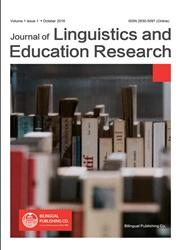A Comparative Analysis between Walt Disney and DreamWorks Based on the Theory of Semantic Roles of Argument Nominals
引用次数: 0
Abstract
AbstractAnchored on Yule’s categories of semantic roles, the present study examined the language of cartoon scripts with Chinese characters in Walt Disney’s Mulan 1 and 2 and DreamWorks’s Kung Fu Panda 1 and 2. Specifically it described the: (1) semantic features of the scripts in terms of semantic roles; and (2)similarities and differences in the language of the scripts semantically. Data analyzed were limited to 800 sentences which were randomly selected from the scripts of Mulan 1 and 2 and Kung Fu Panda 1 and 2. More specifically, 200 lines per film were analyzed by taxonomizing the utterances in terms of identifying the semantic roles of argument nominals in each utterance. Results revealed the roles of agent and experiencer in the subject positions are dominant in contrast with the frequency of occurrences of theme, goal, location and source. In conclusion, the language of animated film is relatively simpler, literal and direct to suit the level of the target audience who are generally children. Finally, this research suggests that more linguistic levels should be conducted to explore the language features on cartoon movies in the future.《华特迪士尼》与《梦工厂》的比较分析——基于主谓词语义角色理论
摘要本研究以Yule的语义角色分类为基础,对迪士尼的《花木兰1》、《花木兰2》和梦工厂的《功夫熊猫1》、《功夫熊猫1》、《功夫熊猫2》中有中文角色的卡通剧本的语言进行了研究。具体描述了:(1)从语义角色的角度描述了脚本的语义特征;(2)语料语言语义的异同。分析的数据仅限于800个句子,这些句子是从《花木兰1》和《功夫熊猫1》和《功夫熊猫1》和《功夫熊猫2》的剧本中随机抽取的。更具体地说,我们对每部电影的200行台词进行了分析,通过对话语进行分类,确定每个话语中论点名词的语义角色。结果表明,主体位置上的施动者和体验者角色占主导地位,而主题、目标、地点和来源的出现频率占主导地位。综上所述,动画电影的语言比较简单,文字和直接,适合目标观众的水平,一般是儿童。最后,本研究建议未来应从更多的语言层面来探索卡通电影的语言特征。
本文章由计算机程序翻译,如有差异,请以英文原文为准。
求助全文
约1分钟内获得全文
求助全文

 求助内容:
求助内容: 应助结果提醒方式:
应助结果提醒方式:


